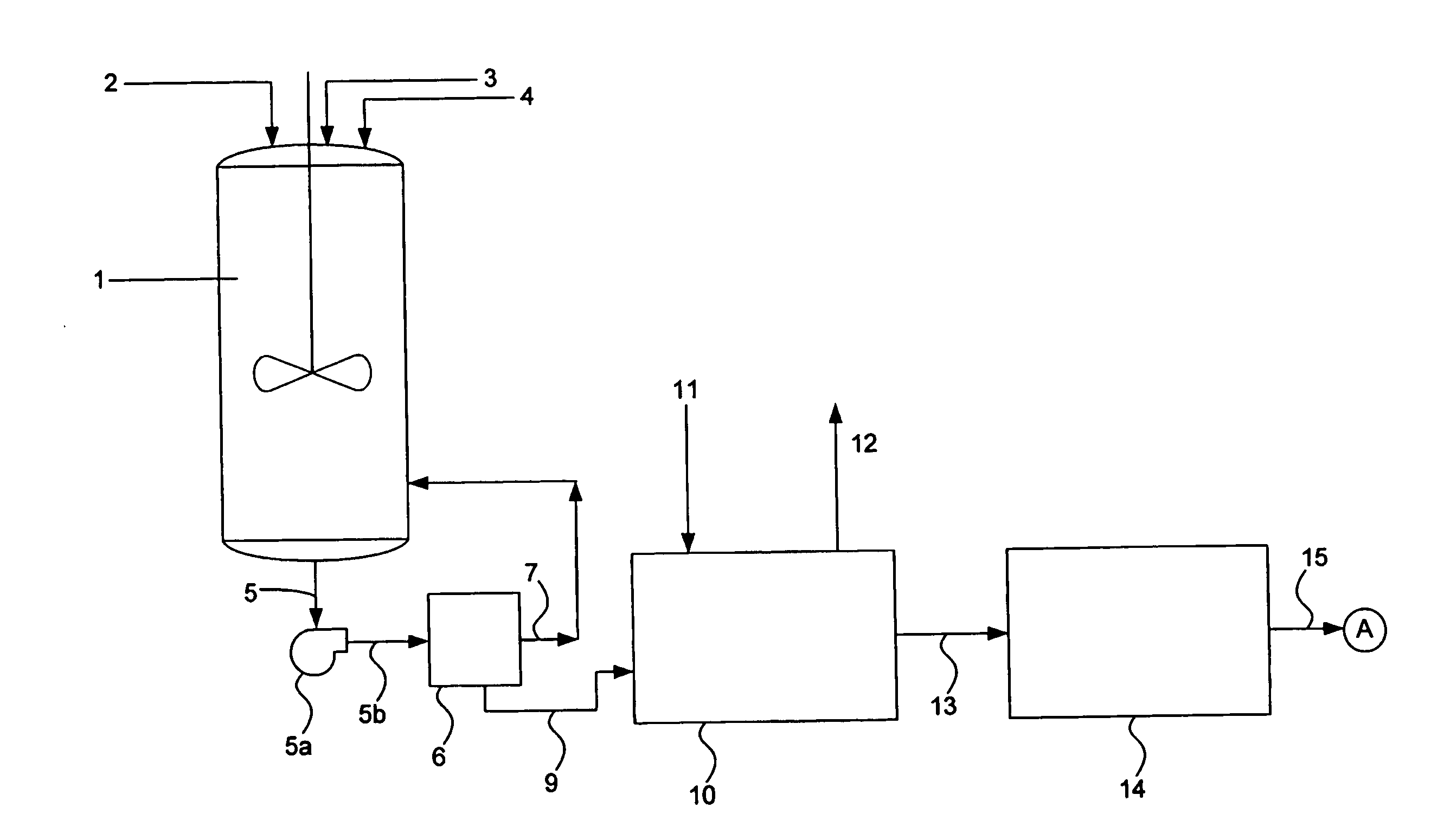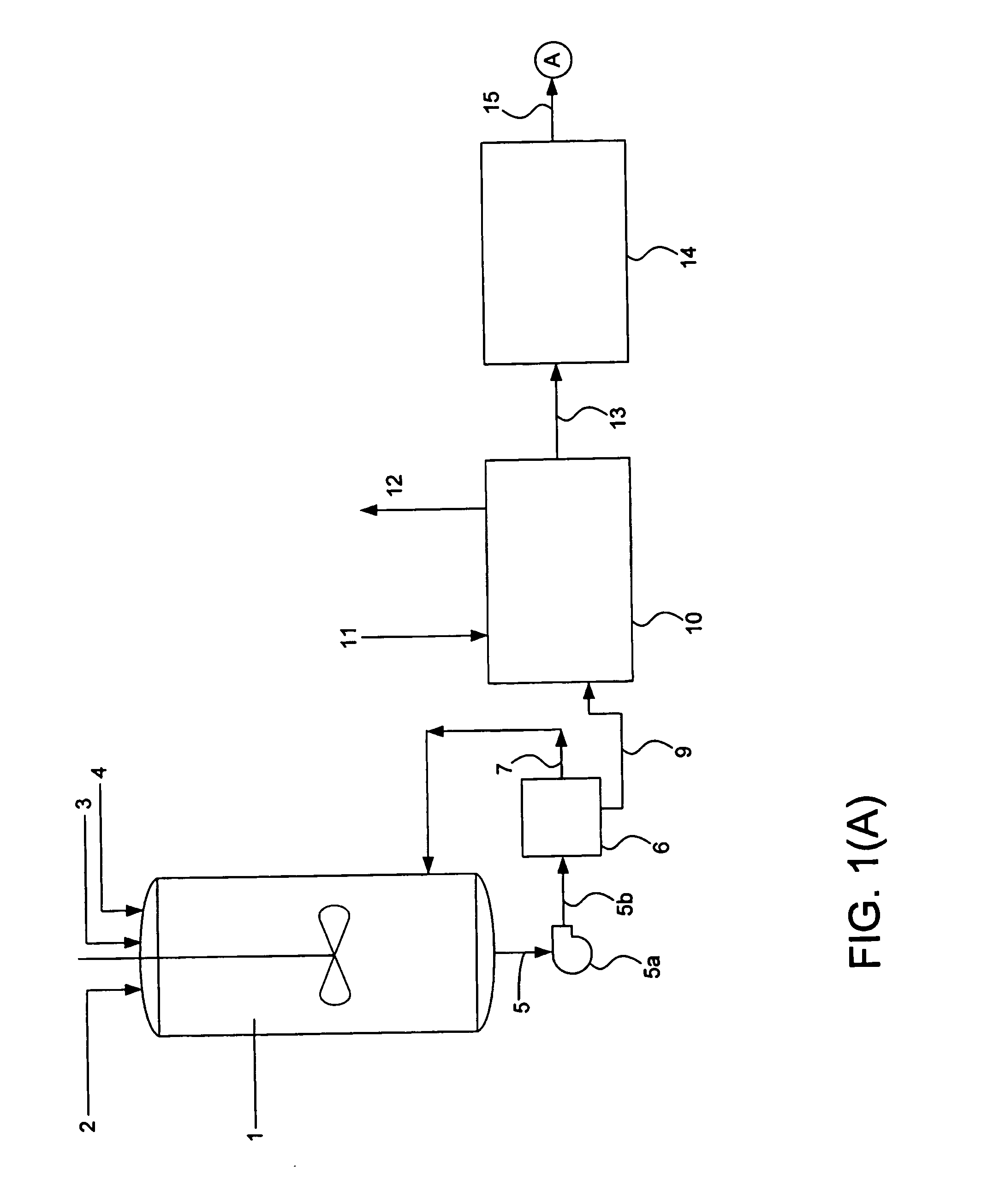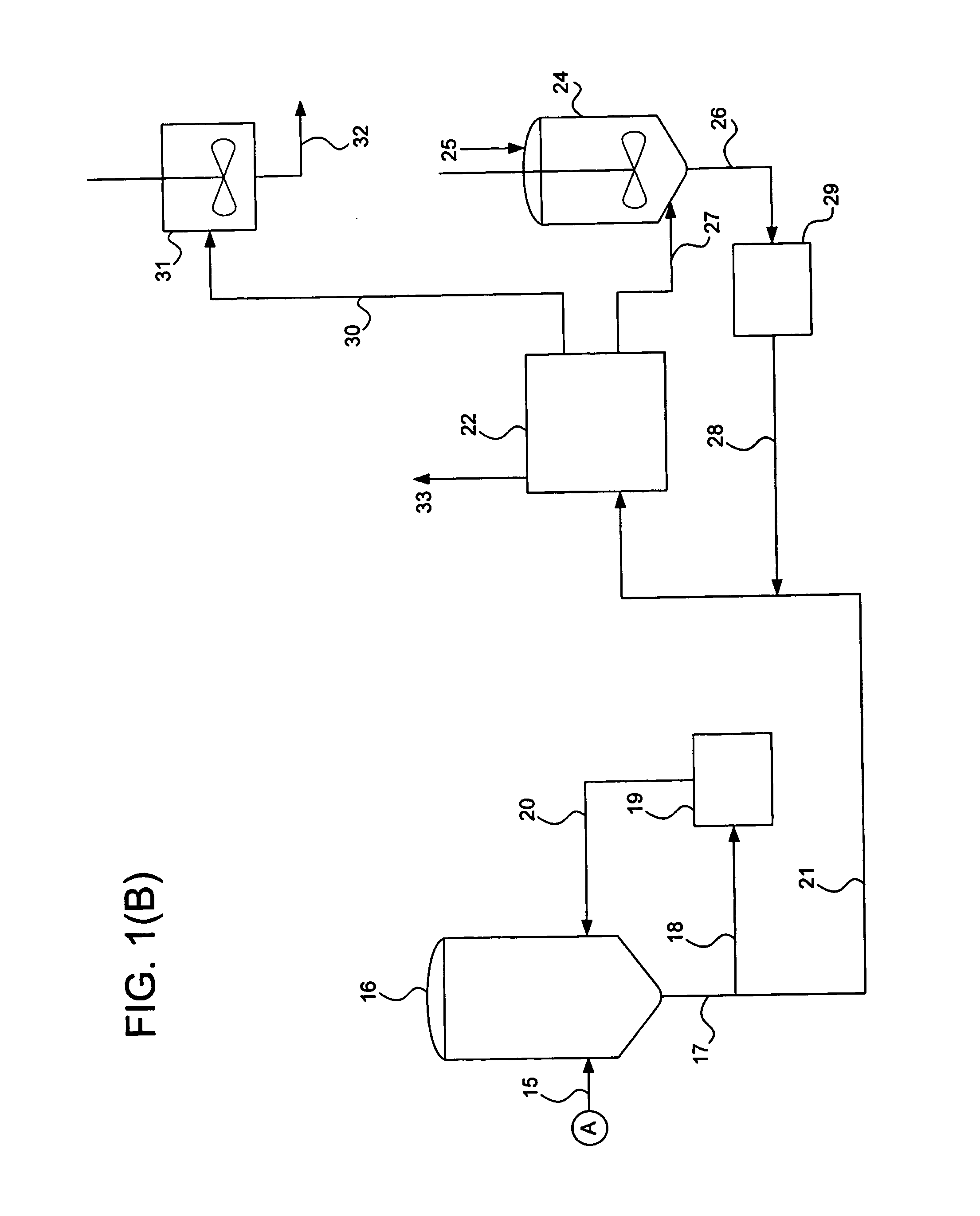Method for extracting nylon from waste materials
a technology of waste materials and nylon, applied in the direction of dyeing process, liquid fuel engine, machine/engine, etc., can solve the problems achieve the effects of reducing temperature and dissolution time, reducing degradation of molecular weight, and reducing dissolution temperatur
- Summary
- Abstract
- Description
- Claims
- Application Information
AI Technical Summary
Benefits of technology
Problems solved by technology
Method used
Image
Examples
example 1
[0092] A series of tests were conducted wherein nylon yarn or nylon chips were tested to determine a baseline relative viscosity. Nylon chips were also dissolved in a methanol / water mixture, the nylon recovered, and its relative viscosity measured. A number of nylon-containing carpet tiles (designated as Sample Nos. 1-6) were chopped up and placed into a pressure vessel to which 400 ml of an alkanol solvent and 100 ml water were added as indicated below, and the mixture heated and pressurized as indicated below. The solution was removed from the pressure vessel into another vessel, where it was cooled until nylon precipitated. This nylon was then tested for relative viscosity using the same method that was used for the nylon yarn or chips. The results are indicated below in Table 1.
TABLE 1SolventFinalDigestion(80%Pressure,RelativeSamplesTemp., ° C.Concentration)psigViscosityNylon 6,6 YarnNot digestedNANA44Standard PA 66Not digestedNANA45Standard PA 66165Methanol20534116599%14040Is...
example 2
[0093] A similar procedure to that used in Example 1 was followed, using two samples from the same carpet tile or broadloom carpet, and varying the pressure thereof. The results are reported below in Table 2. Where “Methanol” and “Pure Ethanol” are indicated 400 ml. of these solvents were mixed with 100 ml of water (“Pure Ethanol” indicates merely that the ethanol has not been denatured). Where “100% Methanol” is indicated, water was not included in the mixture. Samples 1 and 3 were taken from carpet tile, Sample 2 was taken from broadloom carpet, and Sample 4 was taken from hotmelt precoated carpet.
TABLE 2DigestionFinalTemp.,Pressure,ViscosityRelativeSamples° C.SolventpsigNumberViscosityNylonNotNANA135446, 6 YarnDigestedStandardNotNANA13745PA 66DigestedStandard165Methanol20511234PA 661A155100%21014147Methanol1B155Pure15014147Ethanol2A155100%21016260Methanol2B155Pure15016662Ethanol
example 3
[0094] An 80% mixture of ethanol and water was preheated to the temperatures indicated below, and added all at once to a vessel containing nylon fiber in sufficient amount to provide a 3.5 wt % mixture of solvent and nylon. The mixture was pressurized to the pressure indicated below in Table 3, and held at pressure for the time indicated below. The liquid was removed from the vessel and cooled in a jacketed vessel to a temperature of 120° C. The resulting cooled liquid was filtered to removed precipitated nylon. The undissolved nylon remaining in the first vessel was measured, and a yield of dissolved nylon to total nylon added to the mixture was computed.
TABLE 3TemperatureRun(° C.)Pressure (psig)Time (min.)Yield (%)114330037642143400238231474502310041505001510051601504588
PUM
| Property | Measurement | Unit |
|---|---|---|
| Temperature | aaaaa | aaaaa |
| Temperature | aaaaa | aaaaa |
| Temperature | aaaaa | aaaaa |
Abstract
Description
Claims
Application Information
 Login to View More
Login to View More - R&D
- Intellectual Property
- Life Sciences
- Materials
- Tech Scout
- Unparalleled Data Quality
- Higher Quality Content
- 60% Fewer Hallucinations
Browse by: Latest US Patents, China's latest patents, Technical Efficacy Thesaurus, Application Domain, Technology Topic, Popular Technical Reports.
© 2025 PatSnap. All rights reserved.Legal|Privacy policy|Modern Slavery Act Transparency Statement|Sitemap|About US| Contact US: help@patsnap.com



